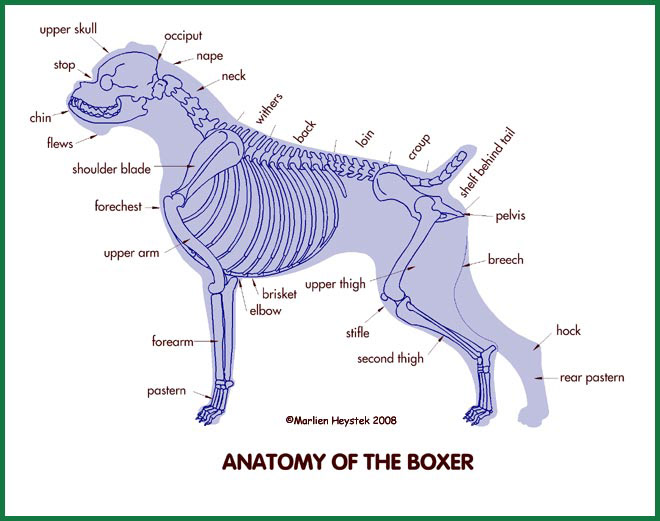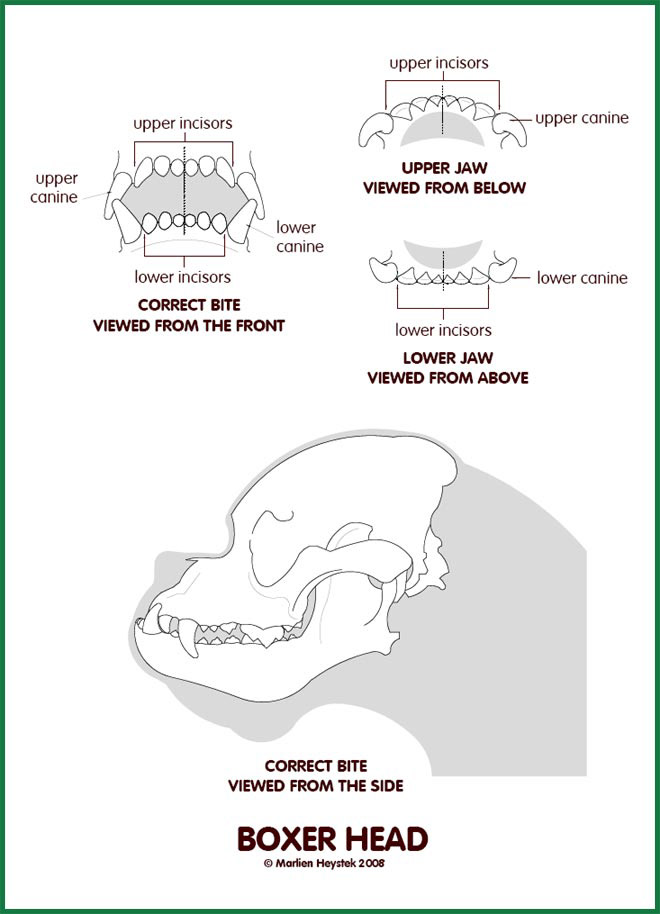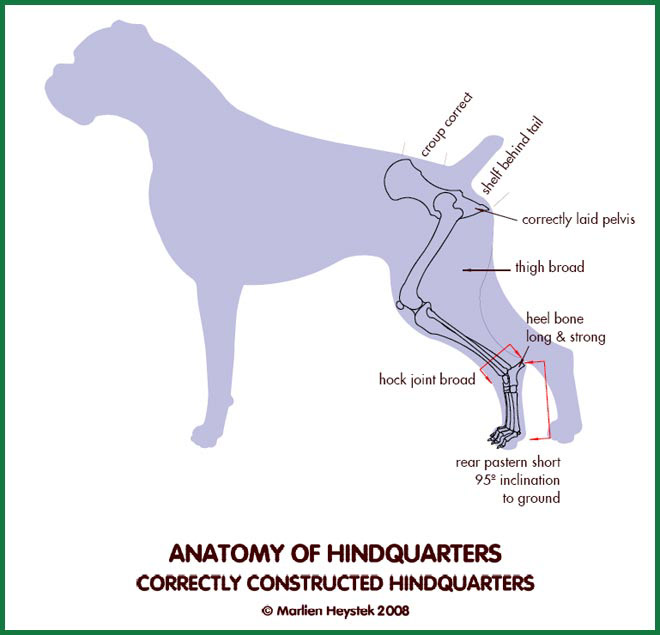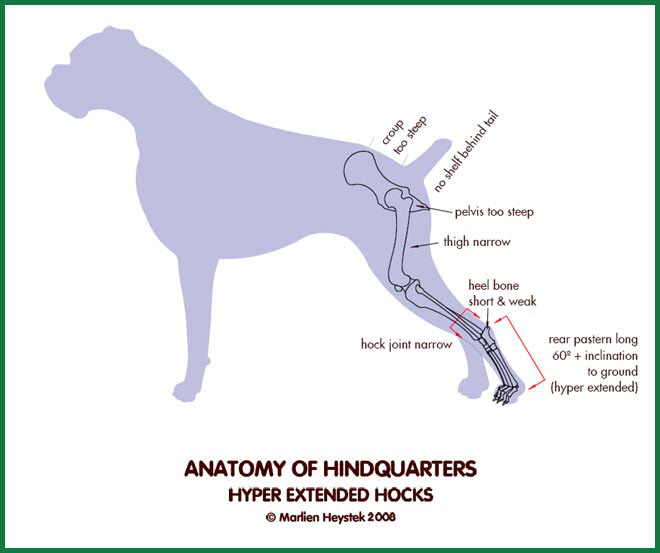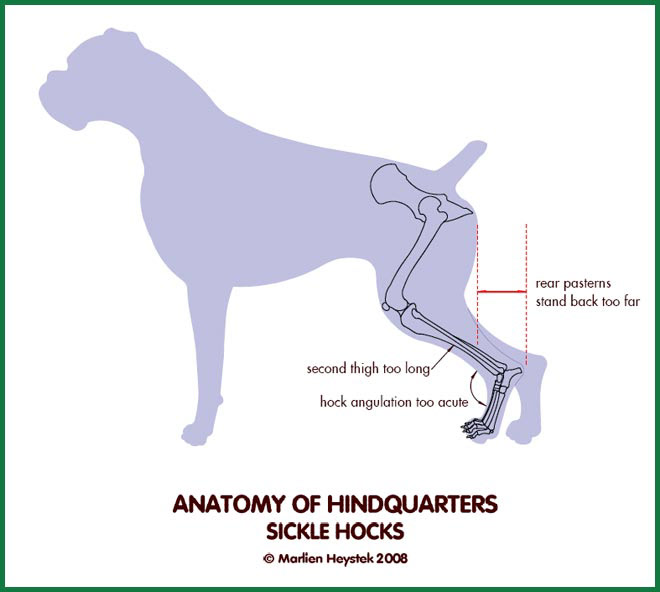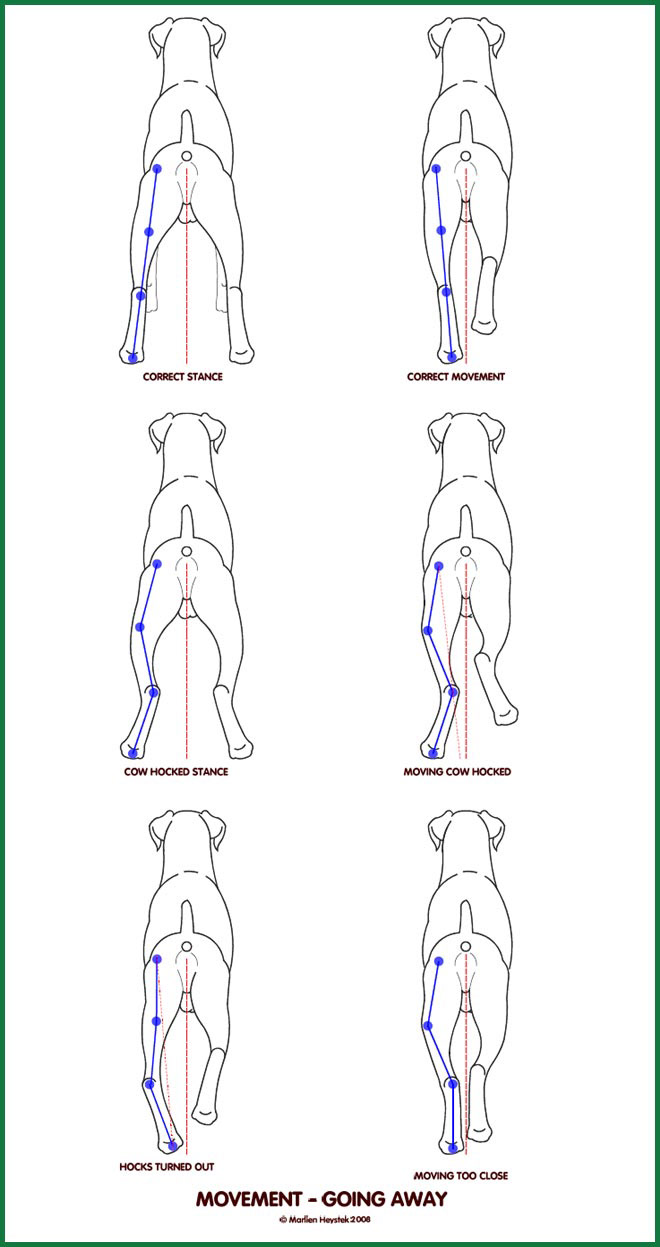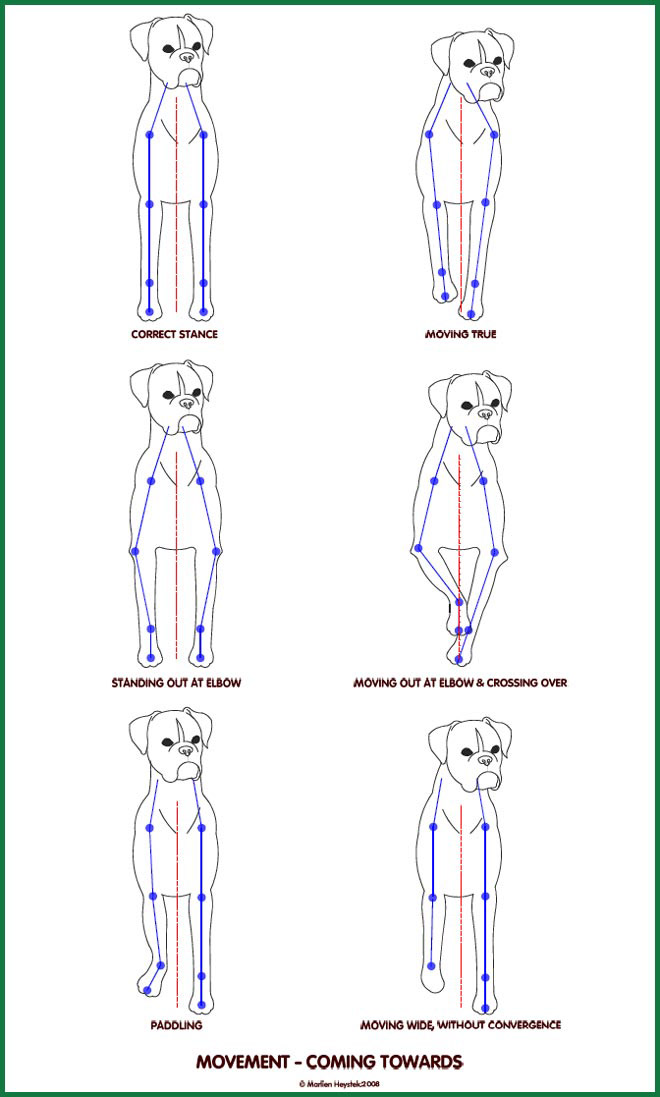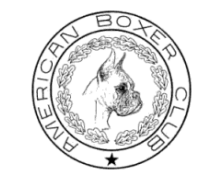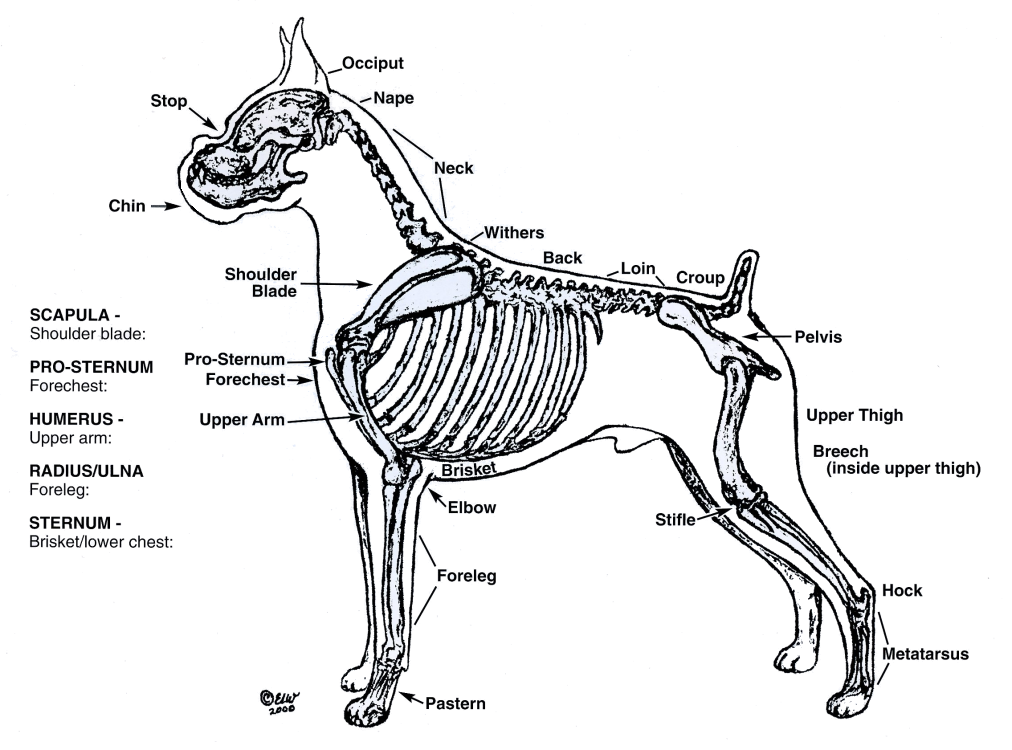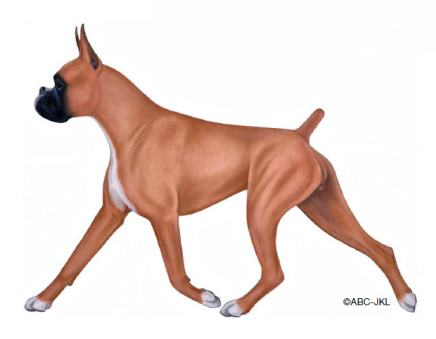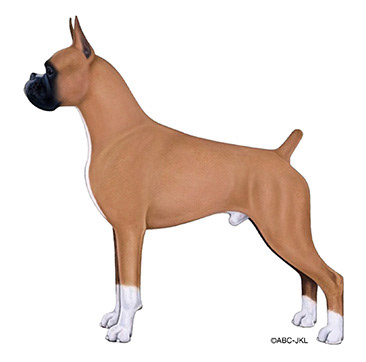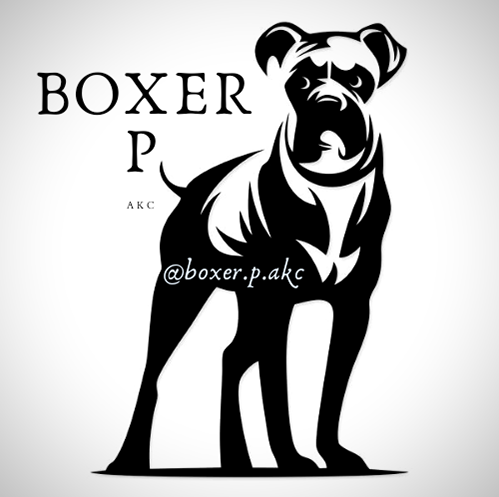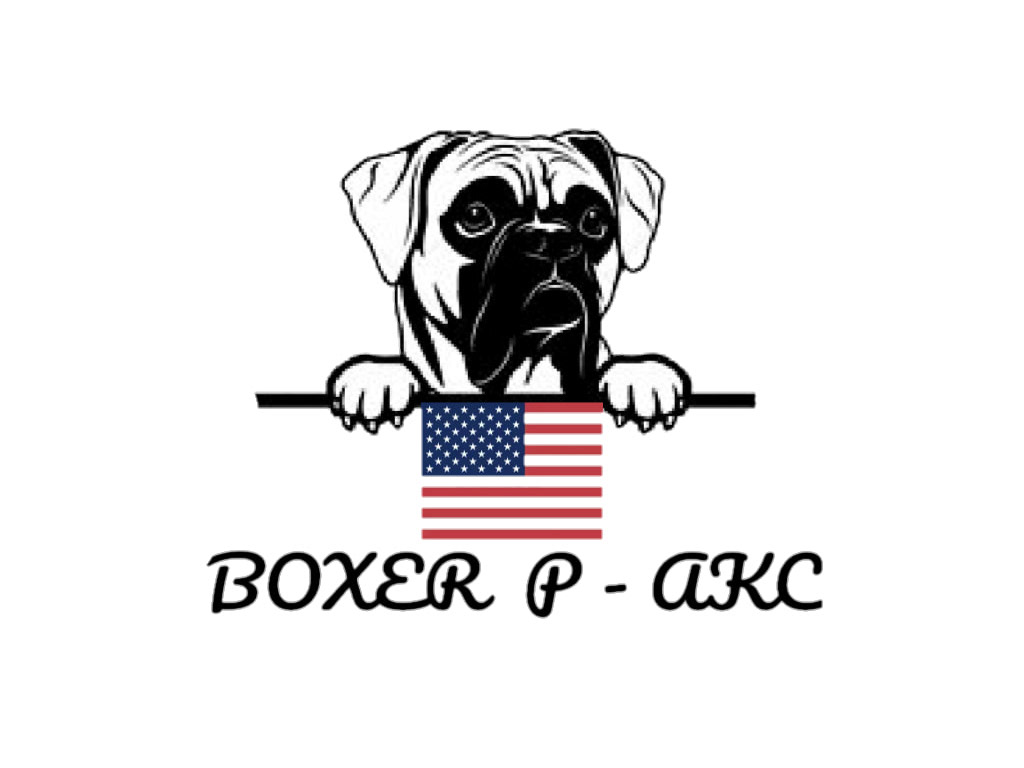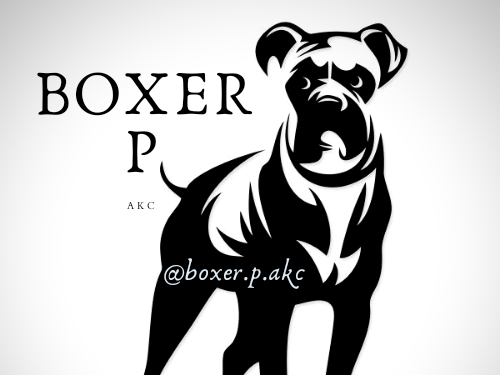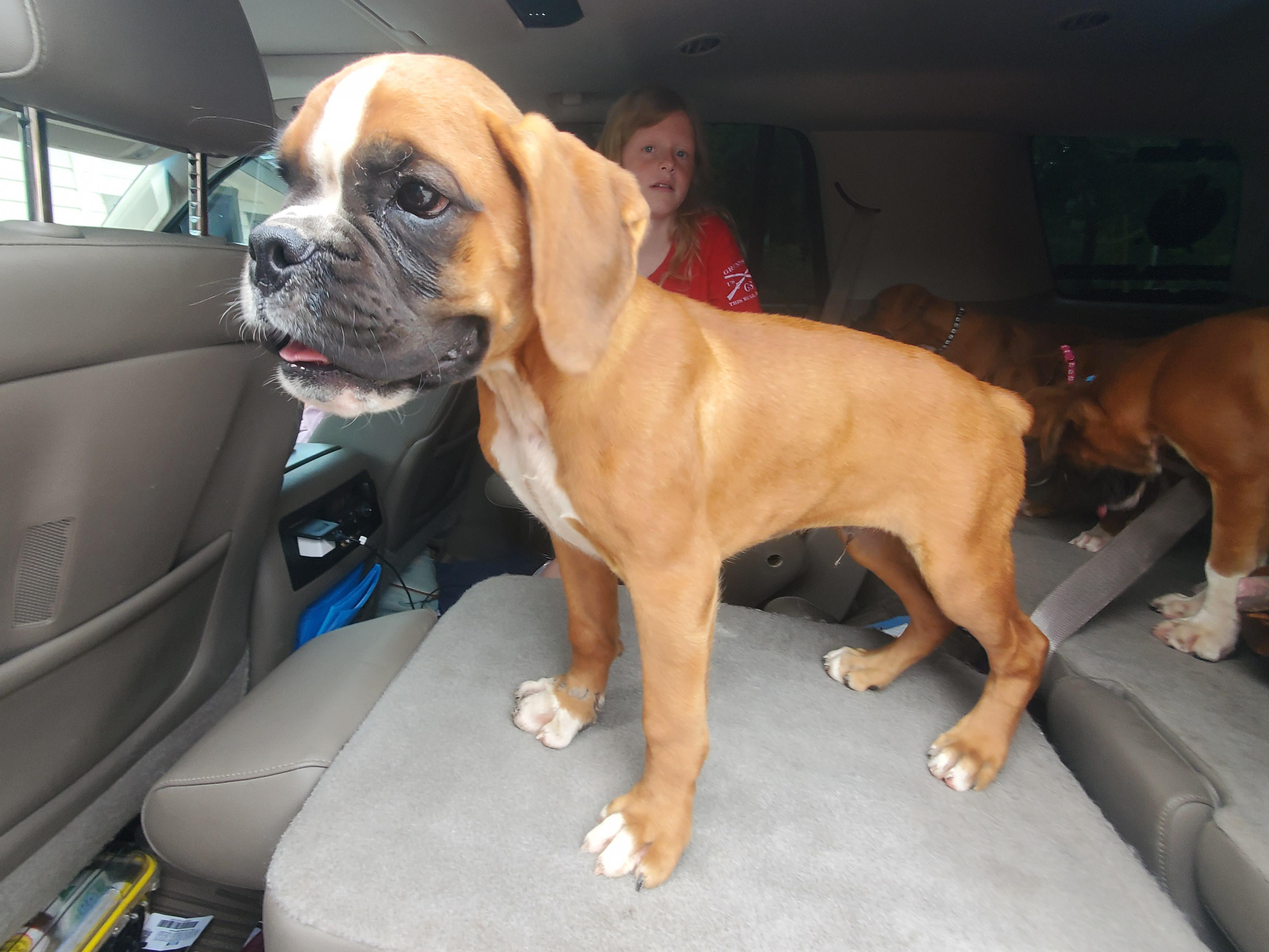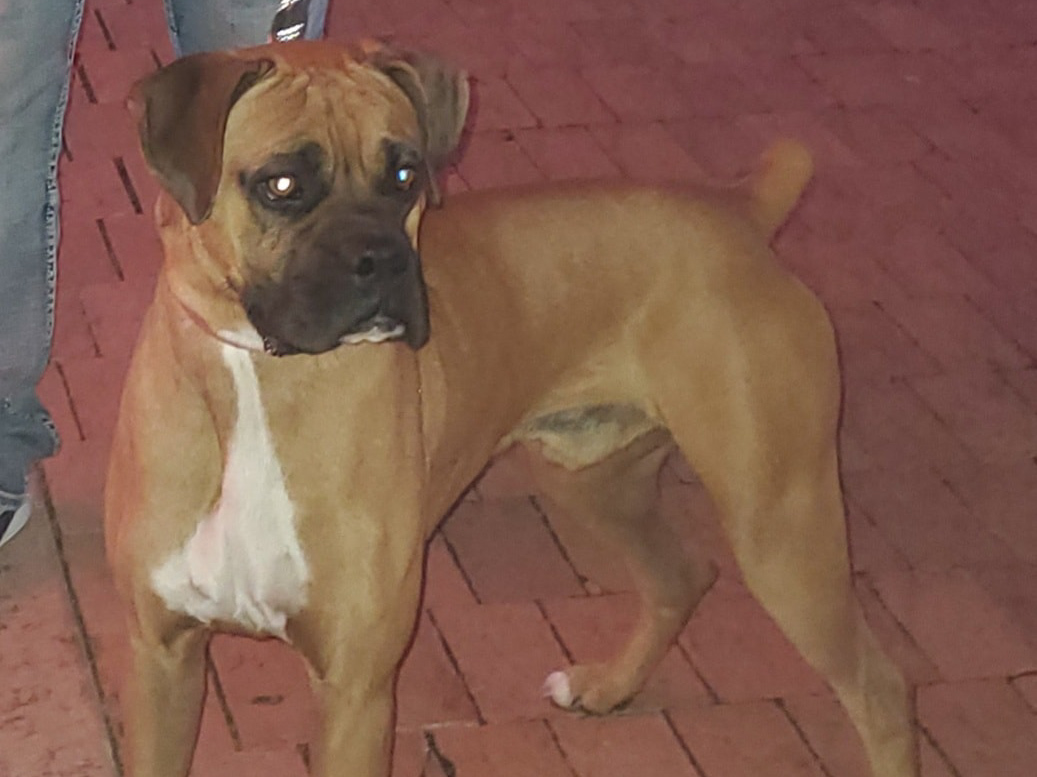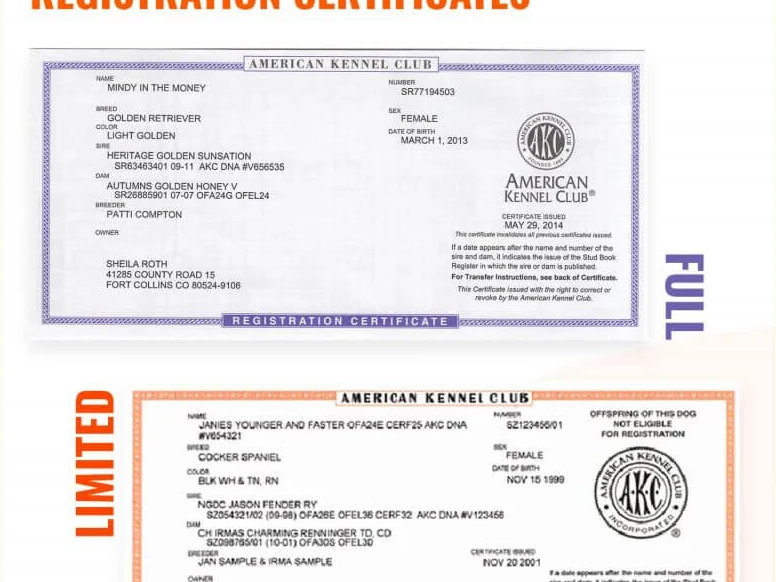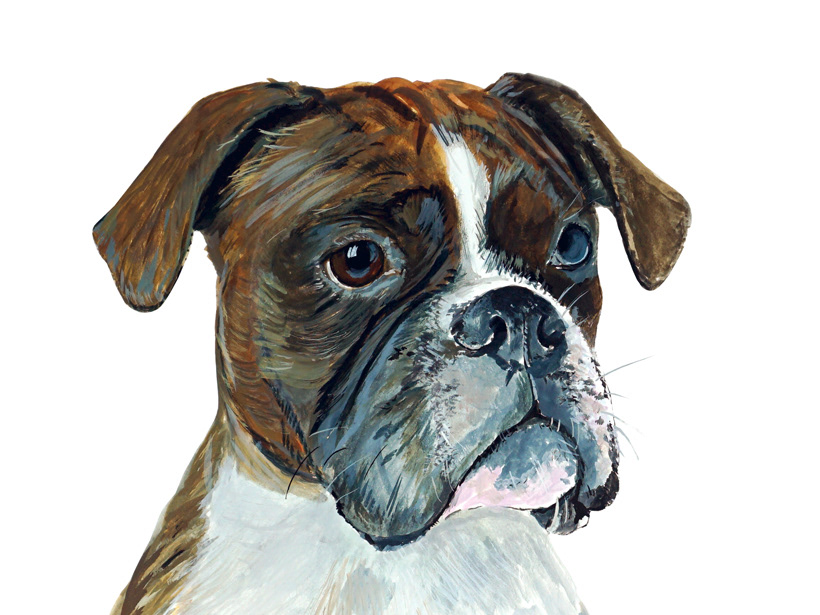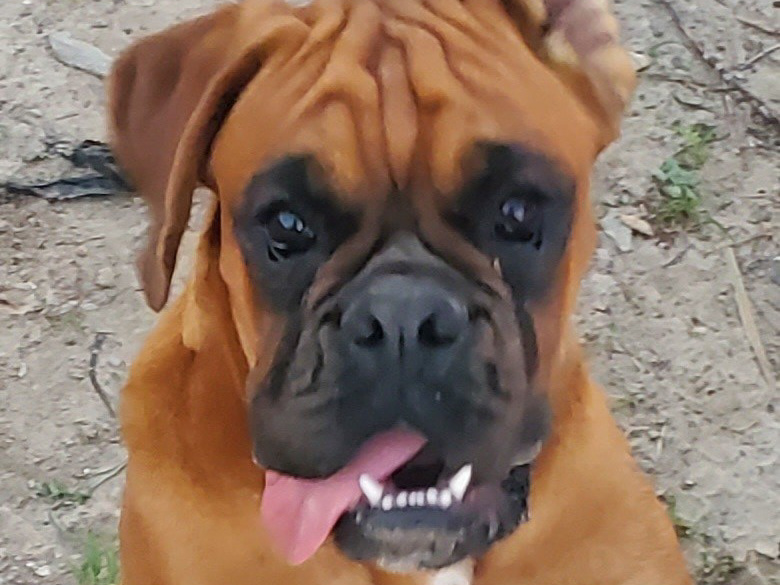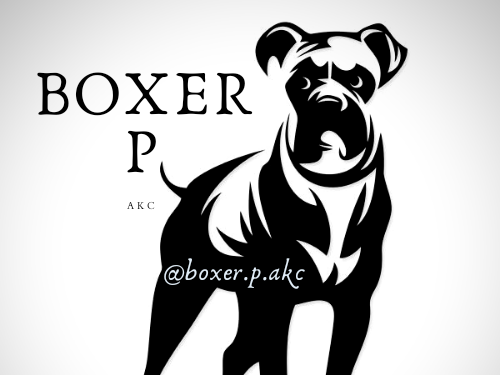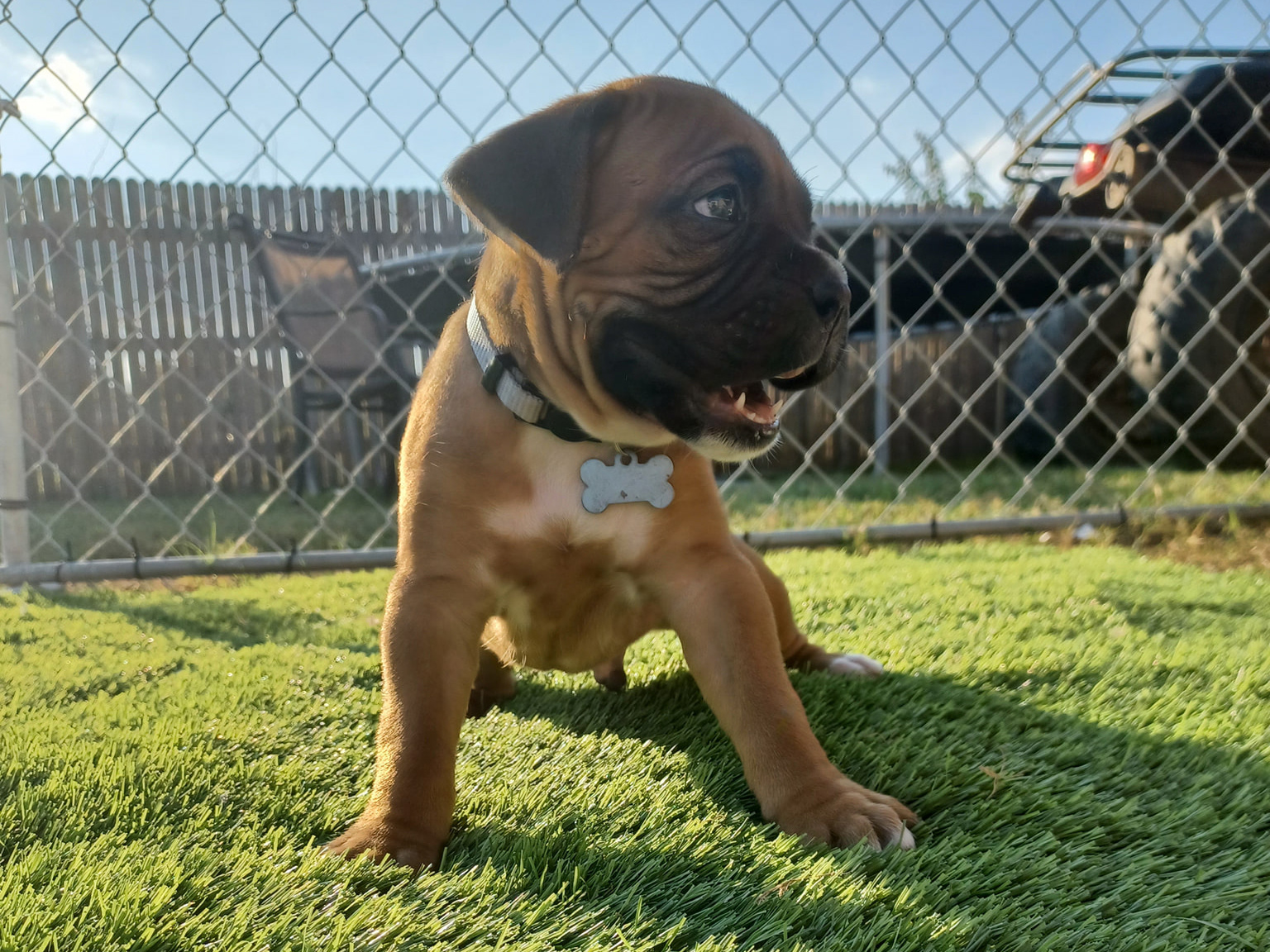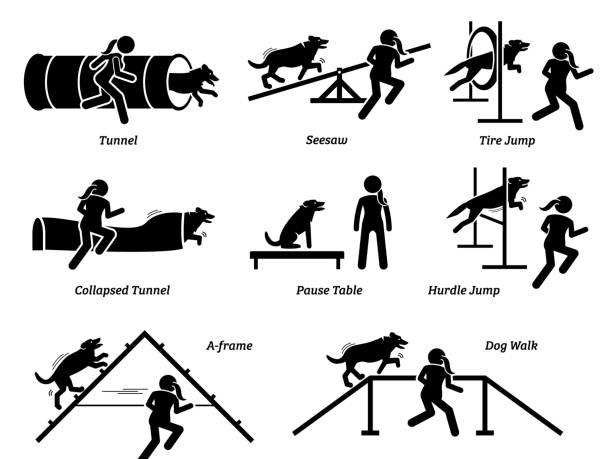







Click on the link above for a list. If your breed is not listed please call the NKC office at 865-932-9680 or email any request regarding breed verification to contactus@nationalkennelclub.com
Excerpt from American Boxer Club Illustrated Standard
The colors are fawn and brindle. Fawn shades vary from light tan to mahogany. The brindle ranges from sparse but clearly defined black stripes on a fawn background to such a heavy concentration of black striping that the essential fawn background color barely, although clearly, shows through (which may create the appearance of reverse brindling).
By: Dr. Robert Conrad & Ann Gilbert (Revised: 12/17/2017)
If you wish to review the simple genetics that are understood about coat color inheritance such as fawn vs. brindle, this is an excellent page that shows dominance vs. recessive alleles in coat colors:
The ideal Boxer is a medium-sized, square-built dog of good substance with short back, strong limbs, and short, tight-fitting coat. His well-developed muscles are clean, hard, and appear smooth under taut skin. His movements denote energy. The gait is firm yet elastic, the stride free and ground-covering, the carriage proud. Developed to serve as guard, working, and companion dog, he combines strength and agility with elegance and style. His expression is alert and his temperament steadfast and tractable. The chiseled head imparts to the Boxer a unique individual stamp. It must be in correct proportion to the body. The broad, blunt muzzle is the distinctive feature, and great value is placed upon its being of proper form and balance with the skull. In judging the Boxer first consideration is given to general appearance and overall balance. Special attention is then devoted to the head, after which the individual body components are examined for their correct construction, and the gait evaluated for efficiency.
Size: Adult males 23 to 25 inches; females 21½ to 23½ inches at the withers. Proper balance and quality in the individual should be of primary importance since there is no size disqualification.
The beauty of the head depends upon the harmonious proportion of muzzle to skull. The blunt muzzle is 1/3 the length of the head from the occiput to the tip of the nose, and 2/3rds the width of the skull. The head should be clean, not showing deep wrinkles (wet). Wrinkles typically appear upon the forehead when ears are erect, and are always present from the lower edge of the stop running downward on both sides of the muzzle.
Neck: Round, of ample length, muscular and clean without excessive hanging skin (dewlap). The neck should have a distinctly arched and elegant nape blending smoothly into the withers.
The shoulders are long and sloping, close-lying, and not excessively covered with muscle (loaded). The upper arm is long, approaching a right angle to the shoulder blade. The elbows should not press too closely to the chest wall nor stand off visibly from it. The forelegs are long, straight, and firmly muscled, and, when viewed from the front, stand parallel to each other. The pastern is strong and distinct, slightly slanting, but standing almost perpendicular to the ground. The dewclaws may be removed. Feet should be compact, turning neither in nor out, with well-arched toes.
The hindquarters are strongly muscled, with angulation in balance with that of the forequarters.
Short, shiny, lying smooth and tight to the body.
The colors are fawn and brindle. Fawn shades vary from light tan to mahogany. The brindle ranges from sparse but clearly defined black stripes on a fawn background to such a heavy concentration of black striping that the essential fawn background color barely, although clearly, shows through (which may create the appearance of reverse brindling).
Viewed from the side, proper front and rear angulation is manifested in a smoothly efficient, level-backed, ground covering stride with a powerful drive emanating from a freely operating rear. Although the front legs do not contribute impelling power, adequate reach should be evident to prevent interference, overlap, or sidewinding (crabbing). Viewed from the front, the shoulders should remain trim and the elbows not flare out. The legs are parallel until gaiting narrows the track in proportion to increasing speed, then the legs come in under the body but should never cross. The line from the shoulder down through the leg should remain straight although not necessarily perpendicular to the ground. Viewed from the rear, a Boxer's rump should not roll. The hind feet should dig in and track relatively true with the front. Again, as speed increases, the normally broad rear track will become narrower. The Boxer's gait should always appear smooth and powerful, never stilted or inefficient.
These are of paramount importance in the Boxer. Instinctively a hearing guard dog, his bearing is alert, dignified, and self-assured. In the show ring his behavior should exhibit constrained animation. With family and friends, his temperament is fundamentally playful, yet patient and stoical with children. Deliberate and wary with strangers, he will exhibit curiosity, but, most importantly, fearless courage if threatened. However, he responds promptly to friendly overtures honestly rendered. His intelligence, loyal affection, and tractability to discipline make him a highly desirable companion. Any evidence of shyness, or lack of dignity or alertness, should be severely penalized.
Boxers that are any color other than fawn or brindle. Boxers with a total of white markings exceeding one-third of the entire coat.
Effective: March 30, 2005
